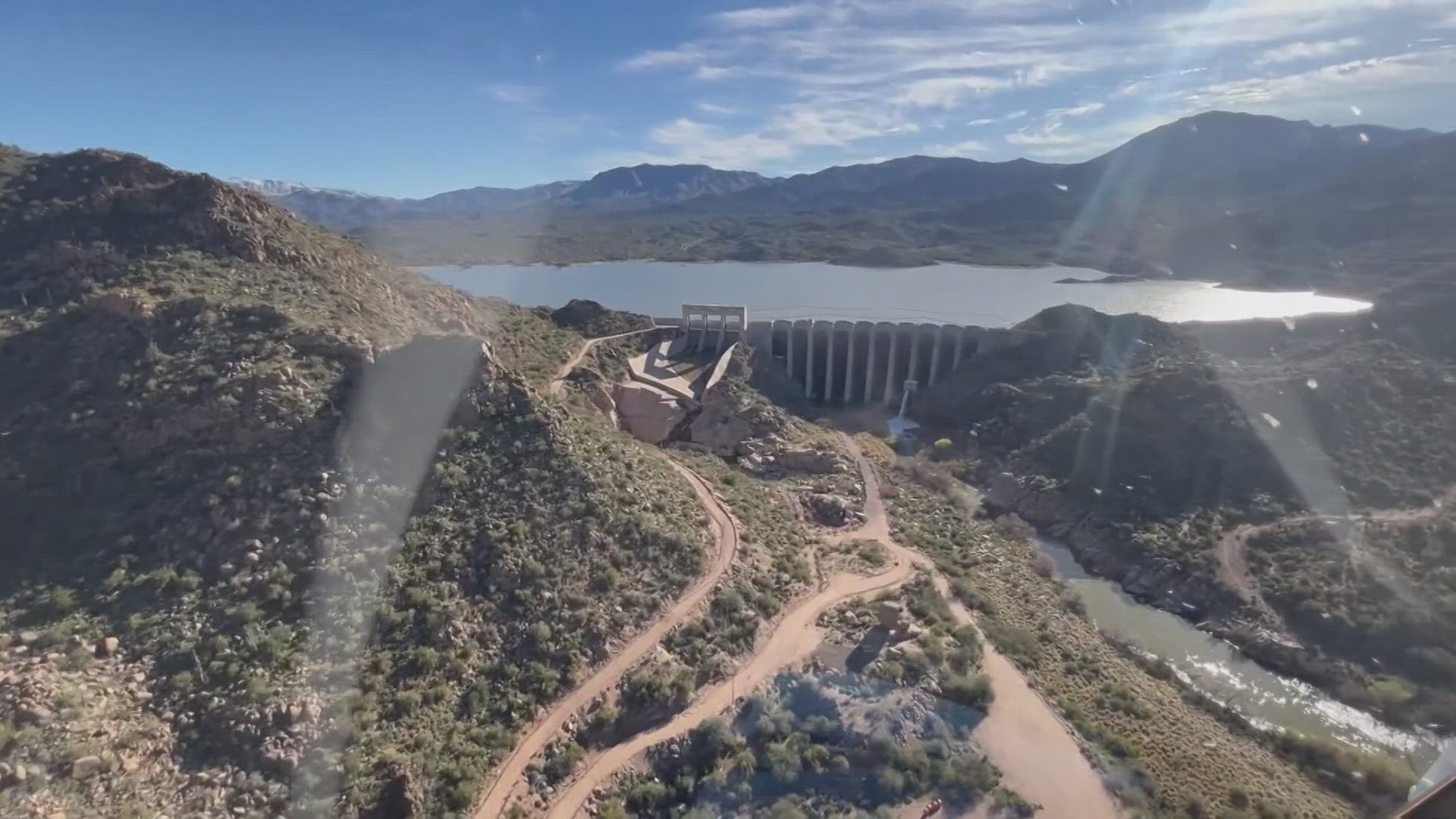PHOENIX — Experts are tracking good chances of an El Nino winter in Arizona. That typically means more rain and snow statewide. As a result, Arizonans could see more closures and flooding because of reservoir releases, like last winter.
If a traditional El Nino winter pans out, Tim Skarupa, a Salt River Project manager, said they expect more inflow of water into Arizona reservoir systems. Skarupa said the state reservoir system is already healthy, currently sitting at about 82 percent capacity.
As there’s more potential to spill more water and increase larger releases, Skarupa said safety is the number one concern in more areas than one.
“When you have these extended large releases, obviously the safety of dams is our number one concern, and then the public at risk," Skarupa said. "So we want to make sure that we stay on top of it. We have a group of meteorologists and hydrologists who are monitoring constantly, the conditions on the watershed, snowpack, rainfall.” SRP said they’ll communicate any planned large releases this winter with Arizonans.
Looking ahead to winter, Skarupa said the increased potential for more precipitation is beneficial. It recharges the reservoir system and bridges the gap between drought periods.
The wet periods not only recharge the surface water supply, but extra water released also recharges underground storage in ground water as it flows through rivers. Each winter, SRP teams move a majority of the water supply from the Salt reservoir system to the Verde reservoir system, because there’s a lot less storage on Verde system compared to the Salt.
RELATED: Flagstaff's 13 feet of snow over the winter means SRP's water supply is in a 'healthy state'
“By drawing reservoirs down, we're able to capture more water for beneficial use in future, and It also mitigates the larger releases that may come from these larger snowpack and rainfall events," Skarupa said.
Last year the Verde reservoir had one of the largest snow packs seen in decades, SRP said. So they started releasing water in early March to make room. If similar releases happen again this year, SRP said there will be impacts in the Valley.
“The water (will) come down to the Granite Reef diversion dam, and if it's a small release, it may stay in our canal system," Skarupa said. "As it gets larger, it'll flow and spill over the Granite Reef diversion dam, and then make its way through the Salt River and make its way downstream. If it's a large enough supply, it can actually reach the Colorado River."
Skarupa added, having two back to back wetter years is not out of the question, but it’s been a while since it has happened in this overall drier period in Arizona.
>> Download the 12News app for the latest local breaking news straight to your phone.
12News on YouTube
Catch up on the latest news and stories on the 12News YouTube channel. Subscribe today.

